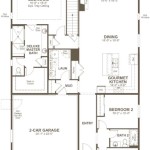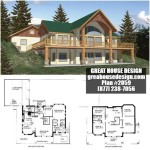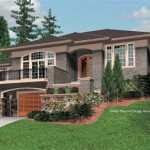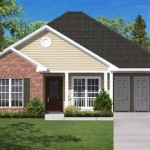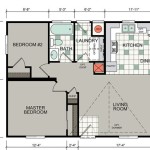Home Floor Plans With Keeping Rooms: A Modern Revival of an Ancient Tradition
The modern home buyer often seeks open concept designs, prioritizing spaciousness and connectivity. However, a growing trend embraces the concept of the keeping room – a smaller, more intimate secondary living space located near the kitchen. This revival represents a desire for both functional space and a sense of cozy togetherness, particularly in homes with large, open floor plans. The keeping room acts as a refuge, a place for family members to gather informally without disrupting the activities in other parts of the house. It offers a blend of historical charm and contemporary living.
Historically, the keeping room served a vital purpose in homes centuries ago, particularly during colder months. It was a warm, centrally located space where families spent much of their time. Often featuring a large fireplace for cooking and heating, the keeping room was truly the heart of the home. Tasks such as food preparation, mending clothes, and childcare all took place in this versatile room. As homes evolved with dedicated kitchens and heating systems, the keeping room gradually faded from prominence. However, its core essence – a comfortable, family-centered space – resonates with today’s homeowners.
Modern keeping rooms are typically designed to complement the kitchen, often flowing seamlessly from it. This proximity allows for easy interaction between family members while meals are being prepared or while relaxing after dinner. While modern keeping rooms rarely serve as the primary cooking area, some may include a small breakfast bar, a coffee station, or even a supplementary sink. The design principles emphasize comfort and practicality, making it a versatile space adaptable to various family needs.
Key Benefits of Incorporating a Keeping Room
Integrating a keeping room into a home’s floor plan provides several advantages. These benefits extend beyond simply adding square footage; they enhance the overall living experience and cater to a more nuanced lifestyle.
First and foremost, a keeping room offers an informal gathering space separate from the main living areas. In open concept homes, the main living room can often feel vast and impersonal. The keeping room provides a more intimate setting for family members to connect, whether it's reading a book, playing games, or simply chatting. This separation helps to contain noise and activity, preventing disruptions in other parts of the house.
Secondly, the close proximity to the kitchen makes the keeping room an ideal space for supervising children while preparing meals. Parents can keep an eye on young children playing or assist older children with homework, all while staying engaged in kitchen activities. This is particularly beneficial for busy families juggling multiple responsibilities. The visual connection between the two spaces allows for easy communication and supervision, creating a safer and more efficient environment.
Thirdly, a keeping room can serve as a flexible space adaptable to evolving family needs. As children grow, the keeping room can transition from a play area to a teen hangout or a homework zone. It can also function as a cozy reading nook, a home office, or even a guest seating area. The versatility of the space ensures its continued relevance and value throughout the family's life cycle in the home. The room's adaptability distinguishes it from single-purpose rooms, making it a worthwhile investment in the home’s long-term functionality.
Design Considerations for a Modern Keeping Room
Designing an effective keeping room requires careful planning and attention to detail. The key is to create a space that is both functional and aesthetically pleasing, seamlessly integrated with the overall home design. Several factors should be considered during the planning process.
The size of the keeping room is crucial. It should be large enough to accommodate the intended activities and furniture, but not so large that it loses its cozy atmosphere. A good rule of thumb is to aim for a space that is roughly half the size of the main living room. Careful consideration should be given to the placement of furniture to maximize space and create comfortable seating arrangements. Avoid overcrowding the room with too much furniture, and prioritize pieces that are both functional and visually appealing.
Lighting is another vital element. Natural light is always desirable, so incorporating large windows or skylights can significantly enhance the room's ambiance. Supplement this with artificial lighting, including a combination of ambient, task, and accent lighting. Dimmable lights are a great option, allowing for adjustable brightness levels to suit different activities and moods. Consider the placement of light fixtures to avoid glare and create a comfortable and inviting atmosphere.
The architectural style and materials used in the keeping room should complement the rest of the home. Whether the home is traditional, modern, or eclectic, the keeping room should feel like a natural extension of the existing design. Use similar colors, textures, and materials to create a cohesive look. For instance, if the kitchen features granite countertops and stainless steel appliances, consider incorporating similar elements into the keeping room's design. This consistency will create a sense of harmony and visual appeal.
Integrating the Keeping Room into Various Home Floor Plans
The adaptability of the keeping room concept allows for seamless integration into various home floor plans. Whether a home is a single-story ranch, a two-story colonial, or a modern contemporary design, the keeping room can be incorporated in a way that enhances the overall functionality and aesthetic appeal.
In a single-story ranch-style home, the keeping room is typically located adjacent to the kitchen, often with a direct connection to the backyard or patio. This layout facilitates easy access to outdoor spaces, making it an ideal space for indoor-outdoor living. The open flow between the kitchen, keeping room, and outdoor areas creates a seamless transition and enhances the sense of spaciousness. Large sliding glass doors or French doors can further enhance this connection, allowing for plenty of natural light and fresh air.
In a two-story colonial-style home, the keeping room is often situated on the ground floor, adjacent to the kitchen and possibly the breakfast nook. This creates a central hub for family activities, with easy access to both the kitchen and the main living areas. The addition of a fireplace can further enhance the room's cozy atmosphere, making it a comfortable space for gathering during colder months. The second story typically houses the bedrooms, providing a clear separation between living and sleeping areas.
In a modern contemporary home, the keeping room can be integrated as part of an open concept design, with a more defined separation from the main living area. This can be achieved through the use of partial walls, changes in flooring, or variations in ceiling height. The keeping room can also incorporate modern design elements, such as minimalist furniture, sleek finishes, and large windows. The key is to create a space that is both functional and visually appealing, reflecting the overall aesthetic of the home.
Irrespective of the architectural style, careful consideration should be given to the flow and connectivity between the keeping room and the surrounding spaces. A well-designed keeping room should feel like a natural extension of the kitchen and living areas, enhancing the overall functionality and aesthetic appeal of the home.
The re-emergence of the keeping room epitomizes a shift towards prioritizing comfort, functionality, and family connection in modern home design. It is more than simply an extra room; it is a carefully curated space designed to enhance the quality of life within the home. By understanding its historical roots and considering modern design principles, homeowners can create a keeping room that perfectly suits their lifestyle and enhances their living experience.

Floor Plan With Keeping Room Sun Mbr Wing Porch That Extends From Sitting To Kitchen Country Style House Plans

Keeping Room House Plans Floor
Keeping Room Floor Plans Dustin Shaw Homes

Keeping Room Craftsman Style House Plans Floor

Country Traditional Home With 3 Bedrms 2461 Sq Ft Plan 109 1103

Exclusive 5 Bedroom Home Plan With Formal Dining And Keeping Rooms 510207wdy Architectural Designs House Plans

Large Southern Brick House Plan By Max Fulbright Designs

Angled Keeping Room Home Plan 15798ge Architectural Designs House Plans

Plan 15644ge Traditional Home With Angled Keeping Room Luxury House Plans

Big Five Bedroom House Plans Blog Dreamhomesource Com

